
Ghostbusters is a licensed game by Activision based on the film of the same name. It was designed by David Crane and released for several home computer platforms in 1984, and later for video game console systems, including the Atari 2600, Master System and Nintendo Entertainment System. The primary target was the Commodore 64 and the programmer for the initial version of the game was Adam Bellin. All versions of the game were released in the USA except for the Amstrad CPC and ZX Spectrum versions, which were released only in Europe, and the MSX version, which was released only in Europe, South America, and Japan.

Captain Blood is a French video game made by ERE Informatique and released by Infogrames in 1988. It was later re-released in the UK by Players Premier Software.

Laser Squad is a turn-based tactics video game, originally released for the ZX Spectrum and later for the Commodore 64, Amstrad CPC, MSX, Amiga, Sharp MZ-800 and Atari ST and PC computers between 1988 and 1992. It was designed by Julian Gollop and his team at Target Games and published by Blade Software, expanding on the ideas applied in their previous Rebelstar series of games.
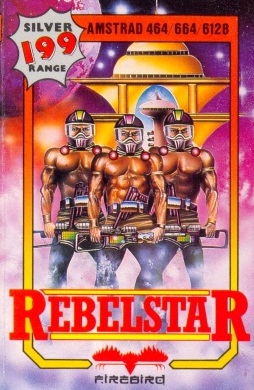
The Rebelstar games are a series of turn-based tactics video games designed by Julian Gollop. Rebelstar Raiders was published in 1984 by Red Shift for the ZX Spectrum. It was reworked in machine code as Rebelstar, published by Firebird in 1986. A sequel, Rebelstar II, was published in 1988 by Silverbird. Rebelstar, but not its sequel, was also adapted for the Amstrad CPC home computer.
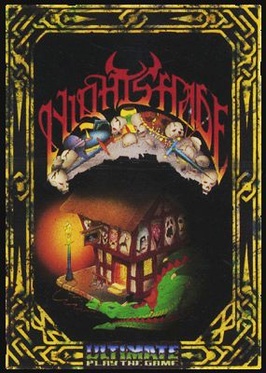
Nightshade is an action video game developed and published by Ultimate Play the Game. It was first released for the ZX Spectrum in 1985, and was then ported to the Amstrad CPC and BBC Micro later that year. It was also ported to the MSX exclusively in Japan in 1986. In the game, the player assumes the role of a knight who sets out to destroy four demons in a plague-infested village.
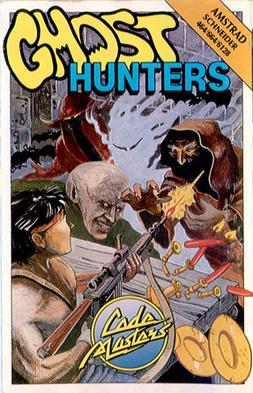
Ghost Hunters is a platform game written by the Oliver twins for the Amstrad CPC and published by Codemasters in January 1987. It was also converted and released for the ZX Spectrum (1987) and Commodore 64 (1989) platforms. The game combines platform-style action with shooting gameplay similar to that found in the game Operation Wolf. The game is the second release by the Oliver twins, published when they were just seventeen years old and still going to school. It was conceived as a sequel to their first commercially successful game, Super Robin Hood, although it has little to do with this game other than using a modified version of its engine. The twins have credited the film Ghostbusters and the cartoon series Scooby-Doo for influencing the game.
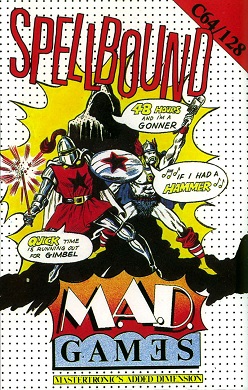
Spellbound is a video game that was designed and programmed by David Jones with music by Rob Hubbard and released in 1985 for the ZX Spectrum and Amstrad CPC home computers. Versions for the Commodore 64 and the Atari 8-bit computers and an enhanced 128K Spectrum version with music and additional graphics were all released in 1986. It is the second game in the Magic Knight series and was published by Mastertronic as part of their Mastertronic Added Dimension label.

Knight Tyme is a computer game released for the ZX Spectrum, Amstrad CPC, Commodore 64 and MSX compatibles in 1986. It was published by Mastertronic as part of their Mastertronic Added Dimension label. Two versions of the ZX Spectrum release were published: a full version for the 128K Spectrum and a cut-down version for the 48K Spectrum that removed the music, some graphics and some locations.

Tau Ceti is a video game published in 1985 by CRL for the ZX Spectrum and converted to the Amstrad CPC, Amstrad PCW, Atari ST, Commodore 64, and MS-DOS. It was designed and programmed by Pete Cooke. The world, set on Tau Ceti III orbiting Tau Ceti, is displayed using 3D graphics with shadow effects. The planet has a day and night cycle.
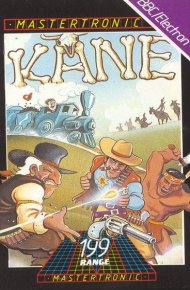
Kane is a multi-section action game published by Mastertronic for the Commodore 64 in 1986. It was ported to the Acorn Electron, Amstrad CPC, BBC Micro, ZX Spectrum, and the Commodore 16 and Plus/4. The game is set in the Wild West, and its name is a reference to the main character of the film High Noon. It consists of four distinct scenes, although some versions only contain two. A sequel was released in 1988.

Myth: History in the Making is a 2D platform game developed and published by British publishing house System 3 for the Commodore 64, Amiga, Amiga CD32, Amstrad CPC and ZX Spectrum. It was also released on the NES as Conan: The Mysteries of Time. It was officially announced for Atari ST and a preview version was available, but the full version was never released.
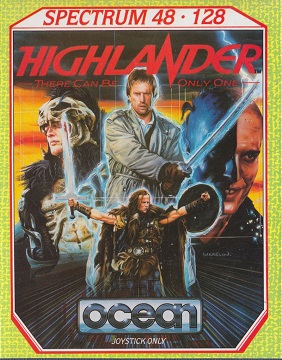
Highlander is a video game tie-in to the Highlander franchise released in 1986, the same year as the film, published by Ocean Software for the ZX Spectrum, Commodore 64 and Amstrad CPC home computers. Highlander was panned by reviewers.

Bugaboo , later published in Spain as La Pulga, is a computer game created in 1983 by the Spanish team of programmers Paco & Paco for the ZX Spectrum. Later versions for the Commodore 64, Amstrad and MSX were produced. Bugaboo, besides being the first video game made in Spain, is one of the first computer games to include cut scenes. Its publication marked the official beginning of the Golden Era of Spanish Software. It was ported to the Amstrad CPC under the name Roland in the Caves, to exploit the CPC's recurring Roland character. A sequel was released in Spain by Opera Soft under the title "Poogaboo", made by Paco Suarez, one of the authors of the original game. Paco Portalo, the other member of Paco & Paco, left the project after the publication of the original game for the ZX Spectrum.

Captain America in: The Doom Tube of Dr. Megalomann, also known as Captain America Defies The Doom Tube, is a video game based on a comic book series of the same name. It was published in 1987 by U.S. Gold on their Go! label for computers including the Amstrad CPC and the Commodore 64 and was published a year later on the ZX Spectrum. Reviews were mixed, with the graphics and audio generally seen as poor. It is the first video game to feature Captain America.

Werewolves of London is a video game released in 1987 for the ZX Spectrum, Commodore 64 and the Amstrad CPC. It was released on a cassette with the Amstrad version on one side and the Spectrum version on the other, this scheme being referred to as "Flippy". The game used the same engine as Viz Design's other game Frankenstein Junior which was released by Codemasters in the same year. The game was released two years late and was as a budget title, as intended. Publisher Ariolasoft ceased trading and the game was subsequently released by Mastertronic. It was also released in Spain by Dro Soft.

Superman: The Game is a 1985 video game designed by Fernando Herrera and published in the U.S. by First Star Software for the Commodore 64. For European release, Superman was ported the Acorn Electron, Amstrad CPC, Atari 8-bit family, BBC Micro, and ZX Spectrum.

Light Force is a 1986 vertically scrolling shooter designed by Greg Follis and Roy Carter, developed by their company Gargoyle Games, and published under their Faster Than Light imprint. It was released for the Amstrad CPC, Commodore 64, and ZX Spectrum platforms.

Human Killing Machine is a 2D fighting video game. The game was developed by British company Tiertex, who hired external team Blue Turtle to produce the graphics, and published by U.S. Gold, released in March 1989. It was touted as a sequel to Tiertex's home computer conversion of Street Fighter. It was released for 8-bit and 16-bit home computer formats.
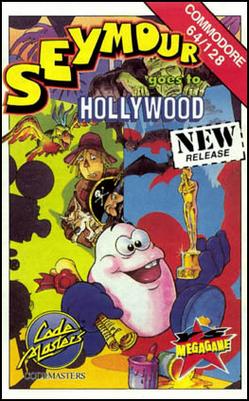
Seymour Goes to Hollywood, also known as Seymour at the Movies, is a platform and adventure game developed by Big Red Software and originally published in Europe by Codemasters in 1991. Players control Seymour, a small potato-like creature who wishes to be a film star. The film's script has been locked in a safe, meaning Seymour must solve puzzles by collecting and using objects scattered throughout the game in order to progress, ultimately retrieving the script and allowing filming to start.
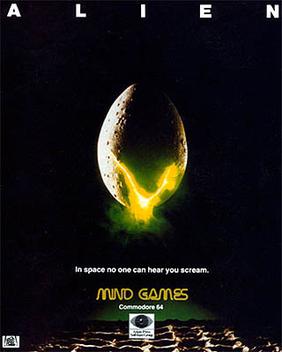
Alien is a 1984 hybrid strategy/adventure video game developed by Concept Software and published by Argus Press Software for the Commodore 64 and ZX Spectrum, and later ported for the Amstrad CPC in 1985. It is based on the science fiction horror film Alien.




















